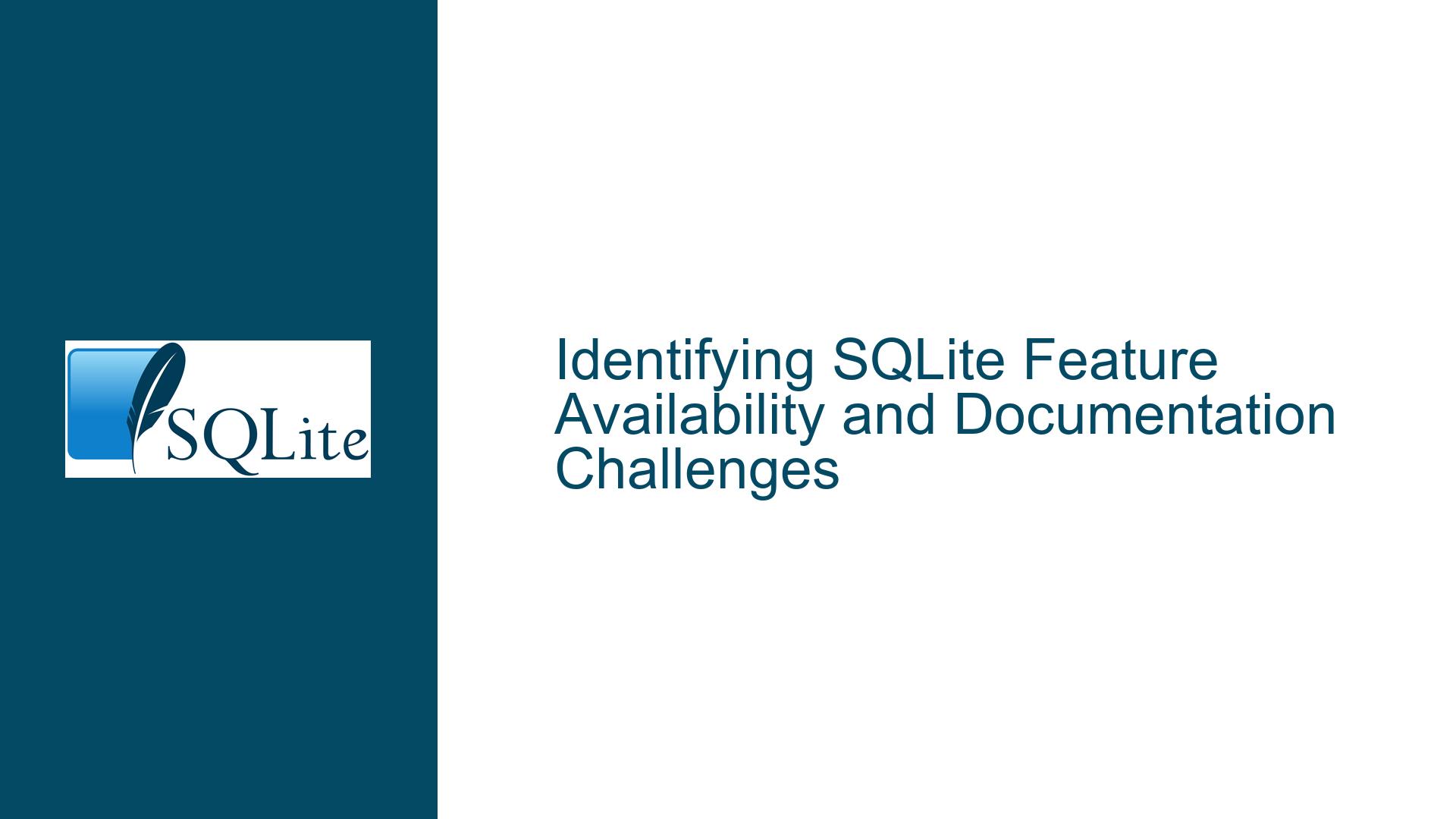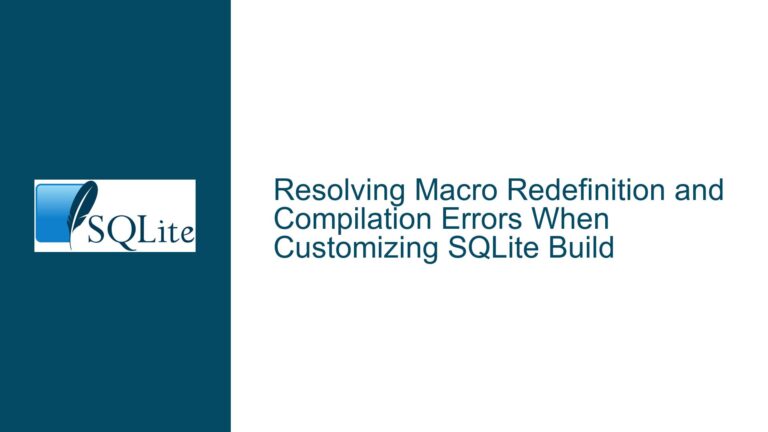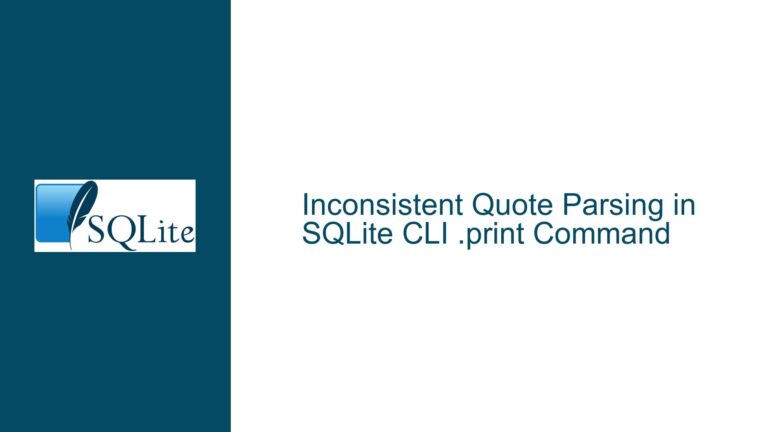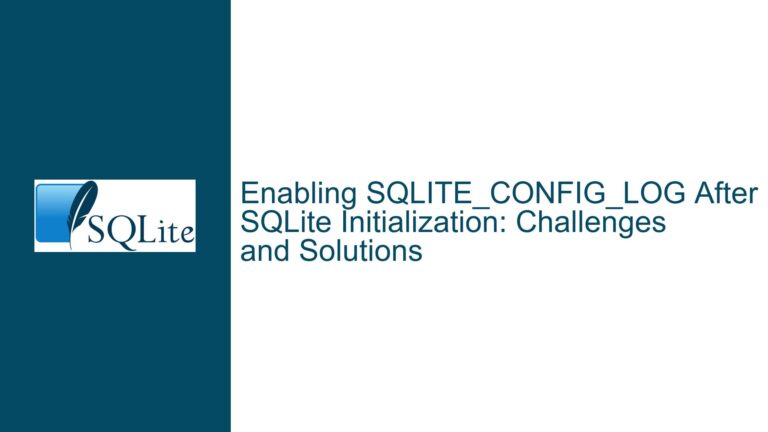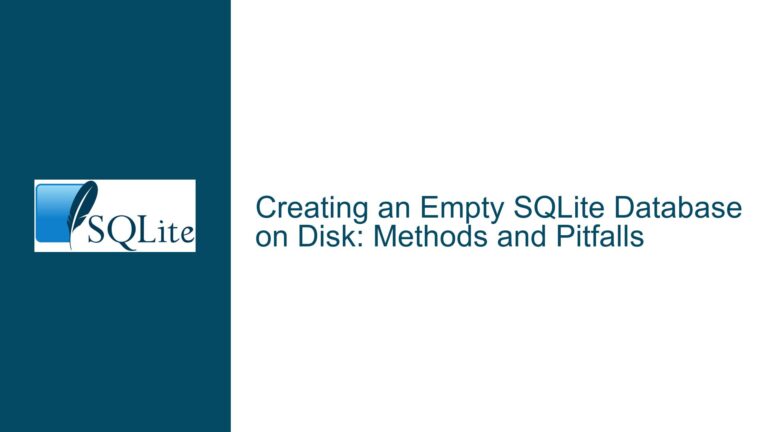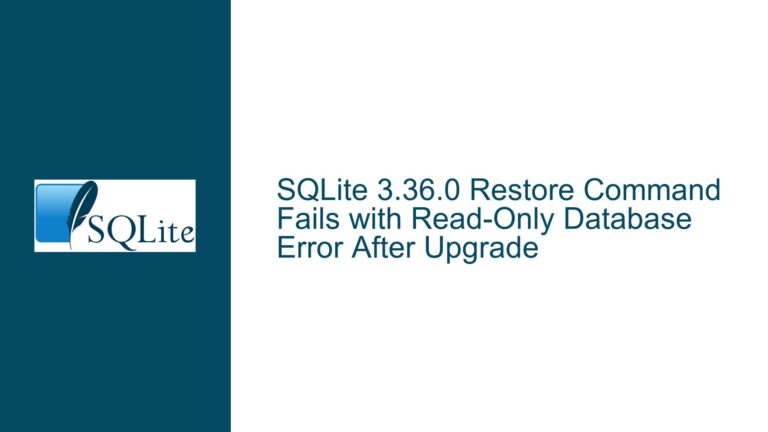Identifying SQLite Feature Availability and Documentation Challenges
SQLite Feature Version Mismatch in Documentation
The core issue revolves around the difficulty users face when determining the specific SQLite version in which a particular feature was introduced. This problem is exacerbated when users are working with older versions of SQLite, such as version 3.30.0, which may not support newer features like the INSERT FROM syntax. The documentation, while comprehensive, does not explicitly tag features with the version number in which they were introduced. This omission can lead to significant confusion and wasted time, as users may attempt to use features that are not available in their installed version of SQLite.
The absence of version-specific tags in the documentation means that users must manually cross-reference the SQLite changelog or download documentation specific to their version. This process is not only time-consuming but also prone to errors, especially for users who are not familiar with the SQLite release history or who are working in environments where upgrading to the latest version is not immediately feasible.
Interrupted Write Operations Leading to Index Corruption
One of the primary causes of this issue is the lack of version-specific annotations in the SQLite documentation. The documentation is primarily aimed at users who are working with the latest version of SQLite, which is understandable given that SQLite is often embedded in applications that are compiled with the latest version of the library. However, this approach neglects the needs of users who are constrained to older versions due to system requirements or organizational policies.
Another contributing factor is the reliance on external resources, such as the SQLite changelog, to determine feature availability. While the changelog is a valuable resource, it is not integrated into the main documentation, making it less accessible to users who may not be aware of its existence. Additionally, the changelog is a linear list of changes, which can be difficult to navigate when trying to find information about a specific feature.
The lack of a centralized, version-specific documentation system further complicates the issue. Users who need to access documentation for older versions of SQLite must manually alter URLs or rely on package managers to provide the correct documentation. This process is not only cumbersome but also error-prone, as it requires users to have a deep understanding of SQLite’s versioning and release history.
Implementing PRAGMA journal_mode and Database Backup
To address the issue of feature version mismatch in SQLite documentation, several steps can be taken. First, the SQLite documentation should be updated to include version-specific annotations for each feature. These annotations should indicate the version number in which the feature was introduced, as well as any subsequent changes or deprecations. This information should be prominently displayed in the documentation, making it easy for users to determine whether a feature is available in their version of SQLite.
In addition to version-specific annotations, the SQLite documentation should include a centralized, version-specific documentation system. This system should allow users to easily access documentation for any version of SQLite, without the need to manually alter URLs or rely on external resources. One possible solution is to integrate the SQLite changelog into the main documentation, allowing users to quickly navigate between different versions and find information about specific features.
Another important step is to improve the visibility of the SQLite changelog and other external resources. The changelog should be prominently linked from the main documentation, and users should be encouraged to consult it when working with older versions of SQLite. Additionally, the SQLite website should provide clear instructions on how to access documentation for specific versions, including direct links to the appropriate documentation files.
For users who are constrained to older versions of SQLite, it is important to provide tools and resources that can help them determine feature availability. One such tool is a version compatibility checker, which would allow users to input their SQLite version and receive a list of available features. This tool could be integrated into the SQLite documentation or provided as a standalone resource.
Finally, users should be encouraged to keep their SQLite installation up to date whenever possible. While this may not always be feasible, especially in environments with strict versioning requirements, upgrading to the latest version of SQLite can help avoid many of the issues associated with feature version mismatch. The SQLite documentation should provide clear guidance on how to upgrade, as well as information on the benefits of doing so.
In conclusion, the issue of feature version mismatch in SQLite documentation is a significant challenge that can lead to confusion and wasted time for users. By implementing version-specific annotations, improving access to version-specific documentation, and providing tools to help users determine feature availability, the SQLite community can help alleviate this issue and improve the overall user experience.
